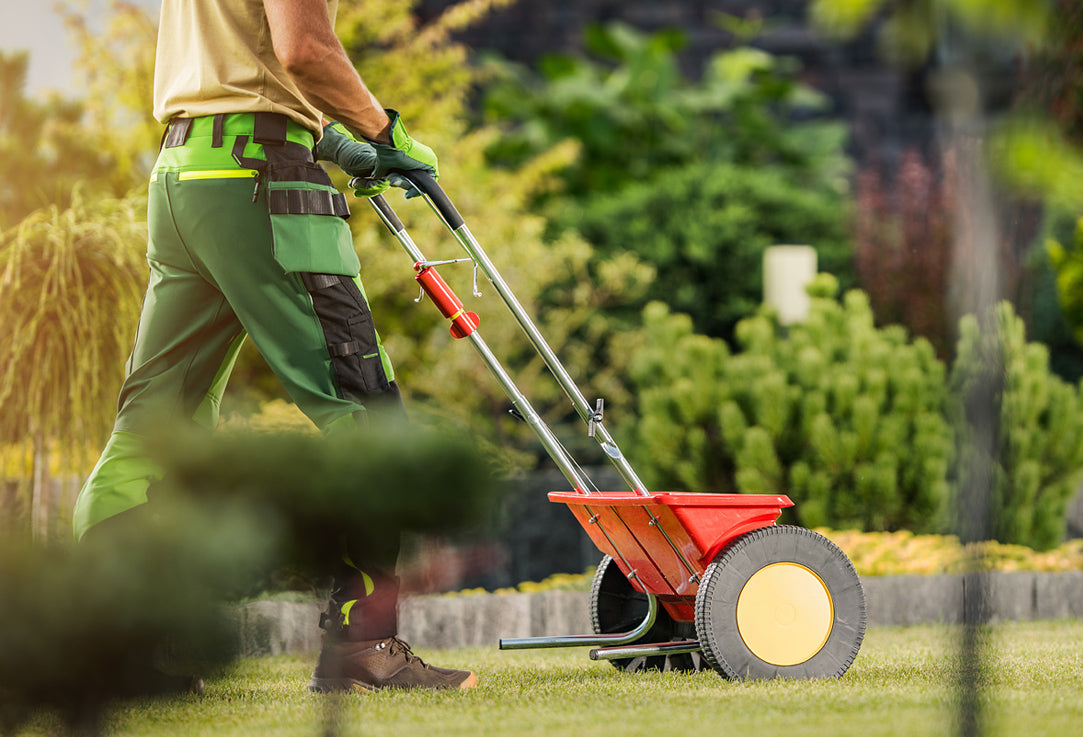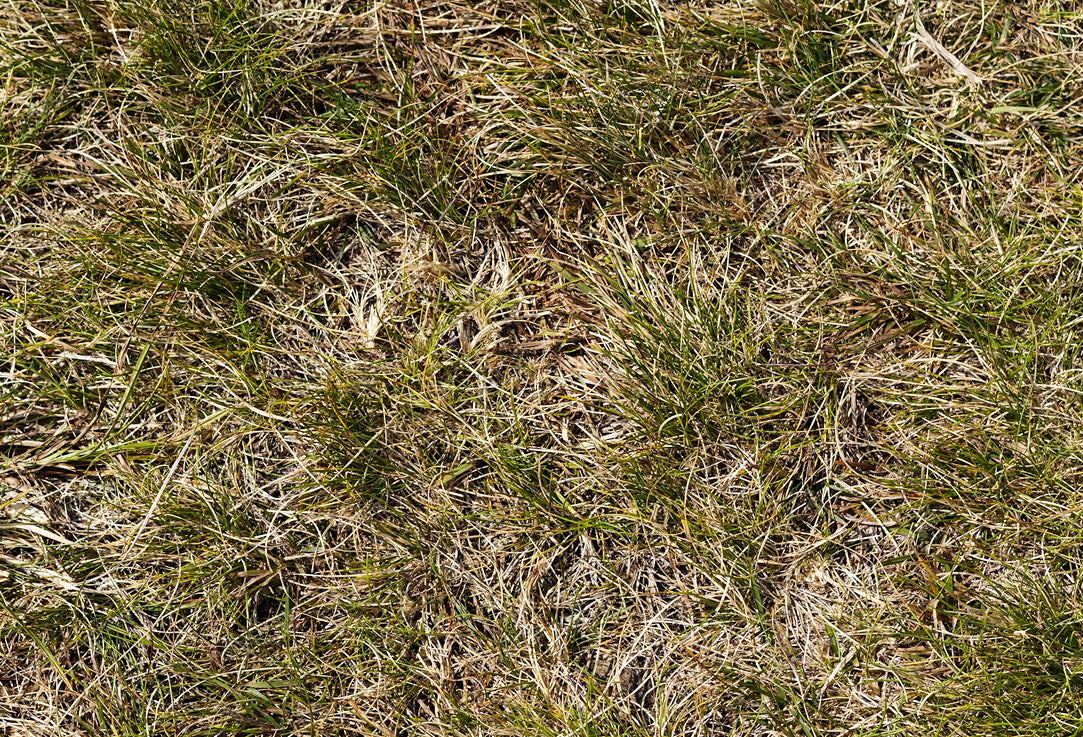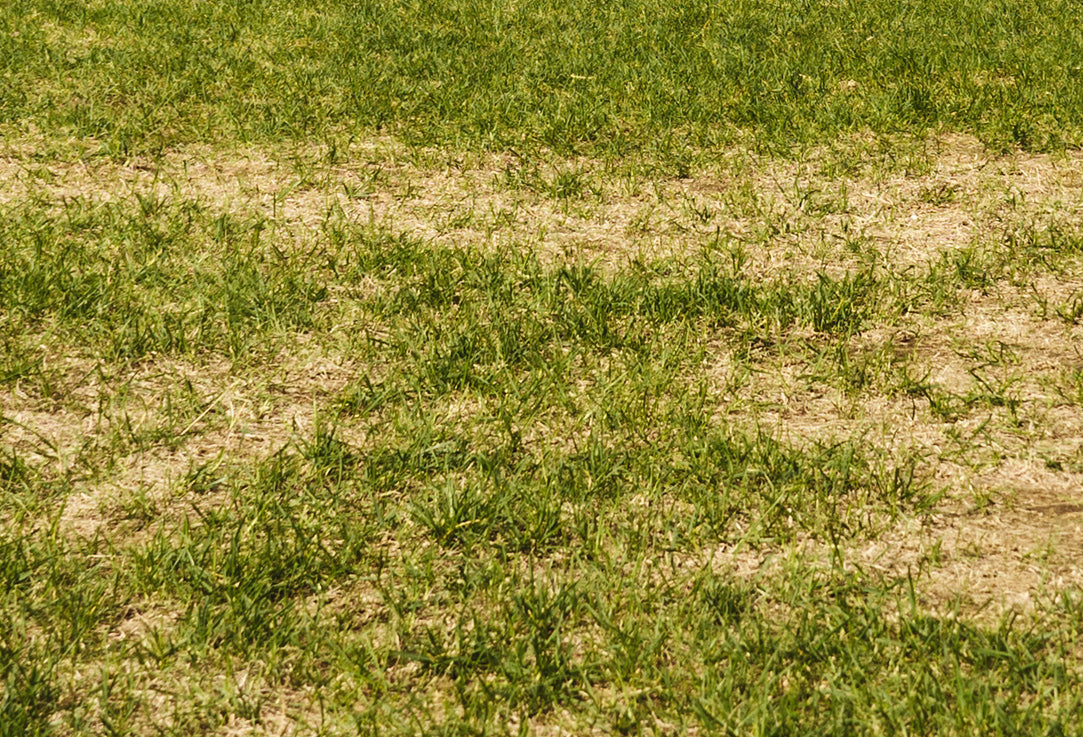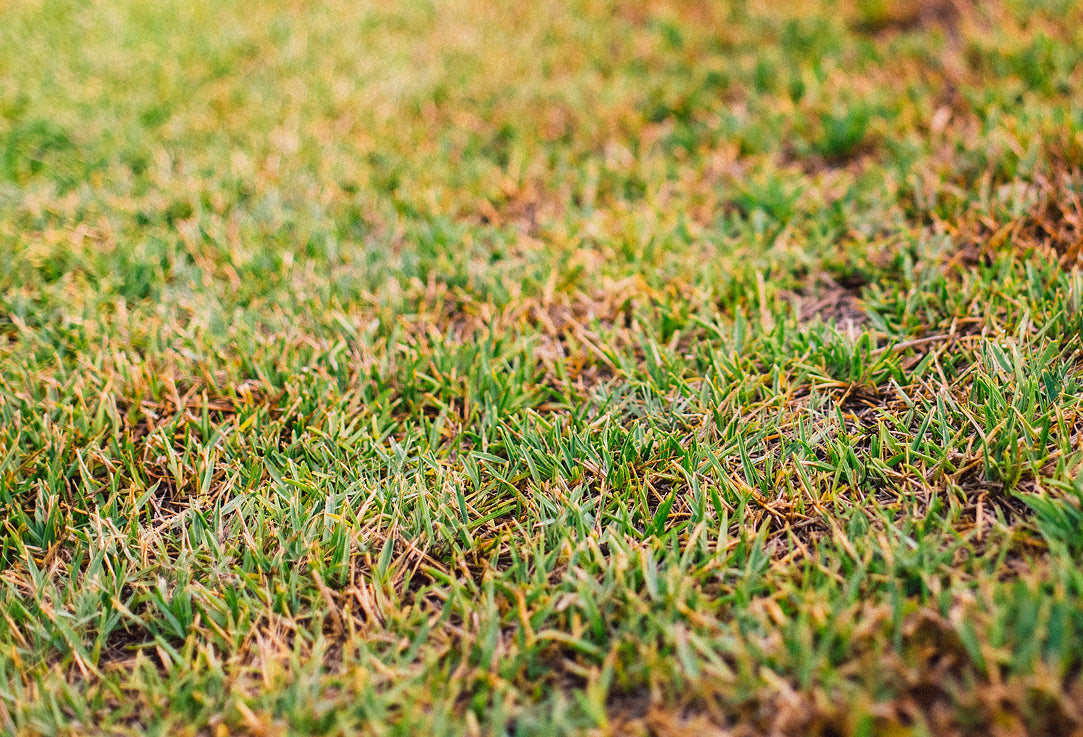
Preparation

- When the area is clean of dead material, it is time to prepare the soil for your new sod. This is best done with a rototiller and a stiff metal garden rake (not a flexible leaf rake).
- Remove rocks and other debris with the garden rake.
- For best results, add organic soil amendments at a rate of 3-5 yards per 1,000 square feet.
- Rototill the area 6 to 8 inches deep. Rototillers can be rented at many rental yards and home improvement centers.

- Work the soil, level and smooth with rake.
- For best results, compact the soil with a roller. Rollers can be rented at many rental yards and home improvement centers. A roller can be used after sod installation to improve contact with the soil.
- Final grade should be 1 inch below walkways and driveways.
- Spread area with starter lawn fertilizer at rate recommended on the label (except in the summer – it creates disease problems).
Sod Installation

- Begin to install A&M Sod immediately after delivery.
- Start laying your sod along a straight edge such as a walkway or driveway. Butt joints tightly together, do not overlap. Stagger joints similar to rows of bricks. Use a sharp knife to cut and shape sod around curves, tress and borders, etc.
- Rolling your new sod with a roller will smooth and level your sod and press out air spaces below the sod. Start watering within 30 minutes even if all the sod isn’t installed yet, to prevent wilting and drying. Never, never let the sod dry out and kill the tender grass roots.
Watering Schedule

- Watering within the first 1/2 hour of turf grass installation is the most important. Give your new lawn at least 2 to 3 cm (1 in) of water within 1/2 hour of installation.
- Water sod daily or more often, keeping turf moist until it is firmly rooted (about 2 weeks). Then less frequent and deeper watering should begin. Weather conditions will dictate the amount and frequency of watering.
- Be certain that your new lawn has enough moisture to survive hot, dry, or windy periods. Water areas near building more often where reflected heat dries the turf.

- Caution: During the first three weeks, avoid heavy or concentrated use of your new lawn. This gives the roots an opportunity to firmly knit with the soil, and ensures that the turf will remain smooth.
- If you have any questions be sure to ask our staff how to water sod best for your new lawn.
- Your newly sodded lawn generally needs mowing after 6-7 days.
- Now that you have established your lawn of freshly cut sod, grown by a qualified nursery sod grower, you need to determine the level of care and maintenance you want to invest in for your lawn to maintain its farm fresh look.
Mowing Tips

With proper care, your lawn will remain a great asset, providing beauty, a clean playing surface and an improved environment. Here are some tips to keep your new lawn healthy after you install sod:
- Mow turf often – generally no more than a 1/3 of grass height ( generally 1.5-2” mowing height).
- Keep your mower blade sharp.
- Follow local TPI mowing recommendations for your type of lawn.
- Fertilizer and chemical applications will depend on climate, sod type, soil, insects, weed, and disease conditions.
- For fertilizer and maintenance requirements, consult with our staff at A&M Sod Supply.
Troubleshooting

Brown Spots
Brown spots on your lawn can diminish its beauty and are the most common issue faced by homeowners. At A&M Sod Supply, we often identify two main causes: inadequate watering and lawn diseases. It's important to diagnose these correctly since each requires a different approach. Simply increasing your irrigation might not be the solution and could worsen issues related to diseases.
To accurately diagnose the problem, try this simple method after your next lawn watering: wait an hour or two, then insert a screwdriver or hand shovel about an inch or two into the soil. With your fingers, assess the moisture level of the soil from both the brown and green patches of your lawn.

Identifying Irrigation Issues
If the soil in the brown spots is drier than in the green areas, your lawn is likely suffering from uneven irrigation. Consult your local irrigation provider for expert advice on installing and repairing irrigation systems to ensure even water distribution across your entire lawn.

Detecting Lawn Diseases
Conversely, if the soil in the brown areas retains similar or more moisture compared to the green areas, you might be dealing with a fungal disease. Signs of disease in fescue grass include a greasy or slimy texture, or a white tinge to the grass. Mushrooms growing in the lawn also indicate excessive moisture and possible disease. Lawn diseases thrive in the warm, moist conditions often found during summer months.
To prevent lawn diseases, A&M Sod Supply recommends avoiding evening watering, especially during the humid summer months. If you suspect a fungal infection, slightly reduce watering and apply a fungicide as directed on the product label. For personalized advice, bring a sample of your affected lawn to your local garden centre for expert guidance.
By understanding the specific needs of your lawn, you can keep it lush and healthy all year round.
Our Warranty

- Sod care and maintenance responsibility, as well as risk, transfers to the property owner after the installation of healthy sod.
- At A&M, all sod is freshly cut and inspected before transport. The individual or contractor is responsible for ensuring the sod was received in excellent condition. If the sod on the trailer is not in excellent condition, please contact us for replacement prior to installation. Any warranty is transferred to the installer once it has been received.
- The contractor or installer is responsible for ensuring the area is properly prepped, installation steps are followed, and the watering schedule is maintained. Sod care and maintenance responsibility and risk transfer to the property owner after the installation of healthy sod.